Rare Rides Icons: The History of Kia's Larger and Full-size Sedans (Part X)

As we return to the history of Kia’s large sedans, we find ourselves in the midst of the 2010s. When the full-size and rear-drive K900 was introduced for the 2015 model year, Kia’s front-drive comfort option, the K7 (Cadenza to you), was in the midst of its first generation. A replacement for the unloved and ugly Opirus (Amanti to North Americans), the K7 ushered in sophisticated but bland Euro-centric styling from Peter Schreyer upon its launch in 2010.
Cadenza didn’t make its way to the North American market until 2014, and debuted with slightly sharper styling and a nicer interior via a mid-cycle refresh. Kia took its time in bringing the Cadenza to the North American market, as they wanted to be sure they got it just right.
In the end, the first Cadenza fell between the soft rock of the Lexus ES and the hard place of the Nissan Maxima. Additionally, it lacked the prestige to compete with other large front-drive upmarket offerings of the time. The new cadenza lasted only three model years in North America, as Kia was ready for an all-new generation K7/Cadenza in 2017.
There was no lag in production between the first- and second-gen K7, as the Hwasung, South Korea plant that produced it was quickly retooled. Second-generation production began in the fall of 2016, and the new sedan was promptly released in all global markets at the same time. Kia dealers in North America were surely pleased there was a new model on the way, without the previously established four-year product lag.
As before, Kia utilized an extant Hyundai platform for its K7 purposes. The first generation used the VG, a lengthened version of the TG that Hyundai created for the 2006-2011 Grandeur. The 2011 Grandeur was the upscale midsize replacement for the old (XG350) Grandeur, which North America would see as an Azera. The new Grandeur/Azera switched over to the next generation HG platform in 2012 when it became a full-size car. In fact, the 2012 Grandeur adopted the same wheelbase length as the then-current first-generation K7.
Because of the staggered product release the two companies shared, the HG generation Grandeur was in its final model year when the second-gen K7 joined it on the platform. As before the two cars maintained completely separate design language, and did not share sheet metal. And like before, Kia saw fit to stretch the HG underpinnings slightly for its version, YG.
The 112-inch wheelbase of the Grandeur was stretched to 112.4 inches, a .4” increase for the new K7. Overall length increased marginally between generations, from 195.5” to 195.7”, while the change in width was more noteworthy: 72.8 inches versus 73.6” on the new K7. The second K7 had an overall height of 57.9 inches, down from 58.1” the year prior. Both first- and second-gen K7s weighed roughly the same, though an increase in equipment meant the new car was about 100 pounds heftier in any trim.
Most of the engine selection was carried over between K7s, though all converted to the newest series two versions. The most basic K7s were fitted with a 2.4-liter inline-four with direct injection, good for 187 horses and 178 torques. There was also a 2.5-liter inline-four from Hyundai’s Smartstream family, which produced 195 horses and 183 lb-ft of torque.
The Lambda engine family from Hyundai provided all V6 power, with displacements of 3.0, 3.3, and 3.5 liters. All were second-generation Lambda engines and used multi-port or direct injection. The 3.0-liter was only available with direct injection and made 262 horsepower and 227 torques. The 3.3 was available with multi-port or direct injection, and made 266 or 290 horsepower, respectively. Torque figures for those two engines were 227 lb-ft and 248 lb-ft.
At 3.5 liters, the multi-port Lambda was the largest V6 on offer in the second-gen K7 and was only available later in its run. That mill was good for 286 horsepower and 250 lb-ft of torque. But the new K7’s engines didn’t stop there.
At the miscellaneous end of the engine lineup was the LPG version of the 3.0-liter V6, which made 232 horsepower and 207 lb-ft of torque. There was also a diesel, an R-series 2.2-liter with direct injection and turbocharging. It managed 199 horsepower and an impressive 325 lb-ft of torque. Finally, there was a hybrid K7, equipped with a 2.4-liter Theta II engine. That engine was paired to a 38 KW electric motor, and a 1.76-kilowatt-hour Li-ion battery. The combined output was 197 horsepower.
Unlike the last K7 where all examples shared the same six-speed, the 2017 was offered with six- or eight-speed shifting potential. The old six was reserved for lower-powered usage and was the transmission offered in the hybrid and LPG versions. Worth noting, that the Grandeur to which the K7 was so closely related offered only the six-speed in its fifth generation (through 2017).
By the arrival of the second K7, Kia was more into its stride with styling. The company’s passenger cars developed their own identity and stepped away from the derivative sampling method used earlier in the decade. Stylistic sampling certainly applied to the pre-refresh first-gen K7/Cadenza.
Kia kept the same general look of the K7 but sharpened things up considerably for its second outing. The Tiger Nose front clip was much more sculpted and relied less on organic shapes. The grille was wider than before and exchanged its mesh filling for vertical chrome slats. The hood had new power bulge detailing, and it was more defined.
At the front corners, a new and more aggressive headlight shape appeared. Within the lamp housing, Kia’s new Z-shaped LED signature running lamp appeared. At the lower valance, a sharper opening went without as much chrome frosting, and eight separate fog lamps were encased in black plastic housings shaped like, well, bullets.
Someone at Kia must have been pleased with the side profile of the original K7, because it was replicated very faithfully on the new model. The A-pillar, side window profile, chrome trim, door handles, and lower chrome trim strip all stayed put. The only notable change along the K7’s flanks was the relocation of the character line, which was newly placed under the windows.
Door handles were color-keyed, and no longer featured as much chrome trim. Multi-spoke wheels were technically a new design but looked almost exactly like the old K7. Viewed from the side, the new K7 did a decent impression of the contemporary Lexus GS.
The new K7’s rear carried on with its more aggressive styling theme. The upper character line curved into a long horizontal chrome spear that tied the rear lighting together visually. The rear lamps were large like they were previously and still finished almost entirely in red. The lamps angled upward rather than down like before. Exhaust outlets were sportier looking and newly trapezoidal.
Visuals at the rear were improved by the relocation of the license plate: It moved from a flat space on the trunk lid to its own indentation in the bumper. While a bit busier overall, the new K7’s rear said upscale better than the outgoing version and was certainly less bland.
For all the effort, the K7’s initial looks lasted for exactly two model years before Kia decided it was time for a change. We’ll talk about the K7’s introduction, pricing, and sales next time. Speculation of course, but the hasty refresh may have been requested by Kia North America once it saw how the Cadenza was glued to dealer lots. Stay tuned.
[Images: Kia]
Become a TTAC insider. Get the latest news, features, TTAC takes, and everything else that gets to the truth about cars first by subscribing to our newsletter.

Interested in lots of cars and their various historical contexts. Started writing articles for TTAC in late 2016, when my first posts were QOTDs. From there I started a few new series like Rare Rides, Buy/Drive/Burn, Abandoned History, and most recently Rare Rides Icons. Operating from a home base in Cincinnati, Ohio, a relative auto journalist dead zone. Many of my articles are prompted by something I'll see on social media that sparks my interest and causes me to research. Finding articles and information from the early days of the internet and beyond that covers the little details lost to time: trim packages, color and wheel choices, interior fabrics. Beyond those, I'm fascinated by automotive industry experiments, both failures and successes. Lately I've taken an interest in AI, and generating "what if" type images for car models long dead. Reincarnating a modern Toyota Paseo, Lincoln Mark IX, or Isuzu Trooper through a text prompt is fun. Fun to post them on Twitter too, and watch people overreact. To that end, the social media I use most is Twitter, @CoreyLewis86. I also contribute pieces for Forbes Wheels and Forbes Home.
More by Corey Lewis
Latest Car Reviews
Read moreLatest Product Reviews
Read moreRecent Comments
- Lorenzo If it's over 30 years old and over 80k miles, and not a classic, it's a parts car, worth no more than 20% of original price.
- Dusterdude No mileage noted on a 33 year old car means likely well north of 300k + miles , along with issues noted , should equate to an ask price of less than $3k
- Ajla IMO, something like this really should be naturally-aspirated.
- Kjhkjlhkjhkljh kljhjkhjklhkjh Unless they are solid state batteries you BAN THEM. I like EVs... but EVs like to burn ... for days
- Kjhkjlhkjhkljh kljhjkhjklhkjh uh .. it looks like a VW golf got the mumps



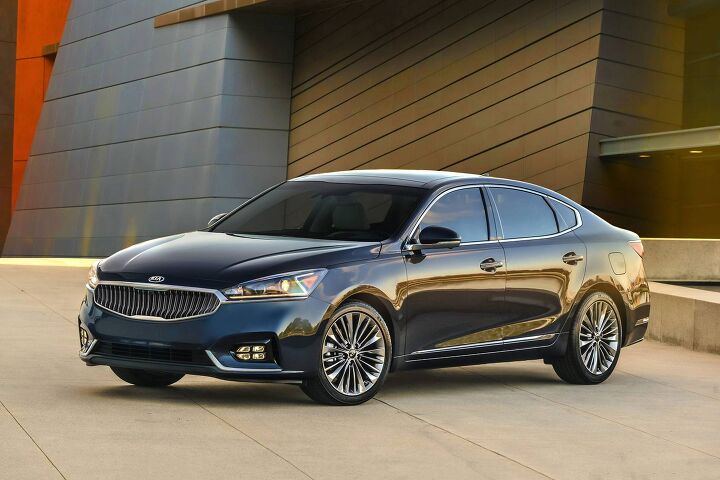



















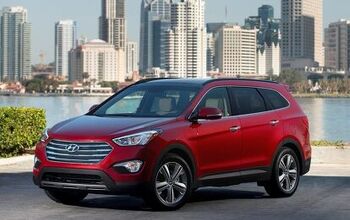

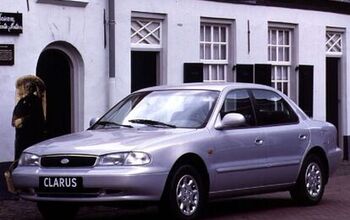
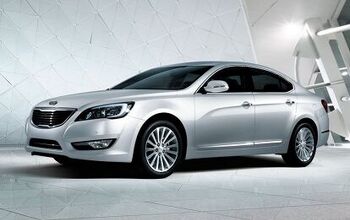
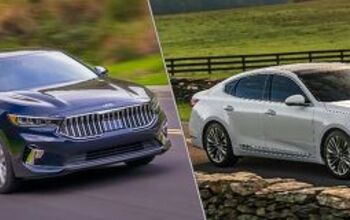
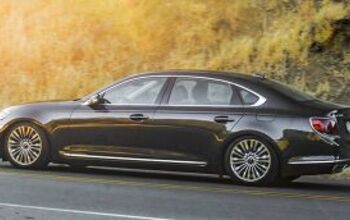
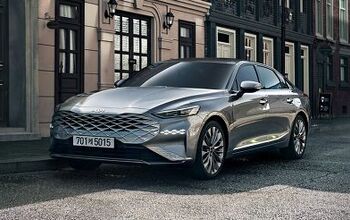










Comments
Join the conversation
At least in the S. Korean market, you can still get one instead of being forced into a breadbox on wheels. With each iteration, the vehicles are getting better following how Toyoduh and Honduh worked until they decided their customers are too stupid to demand much so ugly and fat became their new business model.
Two-time Cadenza owner here... maybe the only one outside of South Korea. These were highly underrated automobiles, especially the 2017-2019 model that in SXL trim gave the ES350 a run for its money, and could be had for many thousands under MSRP to boot. I still kick myself for not buying my 2017 after the lease was up.